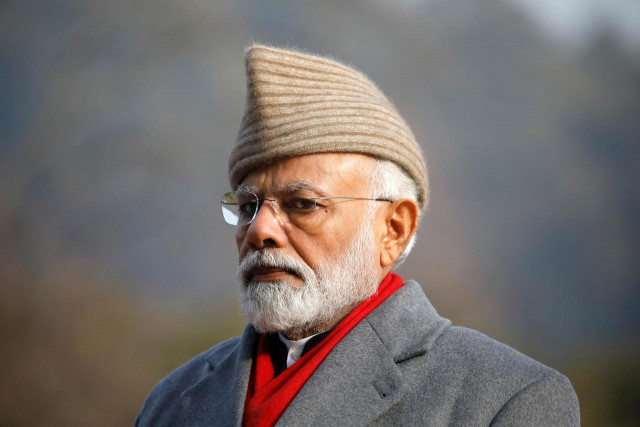What Modi can learn from Emperor Akbar — Part 1
We can assess Akbar’s attitude to religion by looking at the most visible symbol of Akbar’s reign — the Nauratan

Indian PM Narendra Modi. PHOTO: REUTERS
In any discussion of these emperors, we must not overlook their military might. Akbar’s army possessed some 30,000 armour-plated elephants which acted like modern tanks. His infantry and cavalry numbered in the hundreds of thousands. He was a successful military commander and doubled the size of his empire, extending — after half a century of his rule — from Afghanistan in the north, to the Muslim kingdoms in south India, from Sindh in the west to Bengal in the east. Yet he was capable of showing great humility and walked barefoot to pay homage to the great Sufi saints. But, most crucially, it was his spectacular success in winning over the non-Muslim religions of India that ensured the stability of his long reign and established his dynasty. His constant acts of kindness to the Hindus and Sikhs were legendary. His subjects were quick to note that those who battled him were quickly met by the force of the empire, but the clashes were not on the basis of religion. His most implacable foes — whether in the Muslim Shia kingdoms of the south or the Muslim Sunni tribes along what came to be known as the tribal areas of north India — were Muslim. Akbar the successful military general satiated with blood turned to the nonviolence preached by Jains. Akbar had a soft spot for Jainism which led him to banning the killing of animals during Jain religious festivals and becoming a vegetarian. Akbar was fascinated by Jesus and revered him: he selected a profoundly spiritual quotation from Jesus to be emblazoned on the entrance to his new city, Fatehpur Sikri. He ordered his governors to spend their free time reading Rumi, the great mystic poet of love and another admirer of Jesus. Akbar allowed churches to be built in Agra and Lahore and one of his wives was Mary. Jesuit priests were encouraged to believe that conversion by the royal family was imminent. Indeed, it was said that Jehangir, Akbar’s son and heir, was partial to Christianity but fearing a backlash did not declare his affiliation.
We can assess Akbar’s attitude to religion by looking at what was considered the most visible symbol of Akbar’s reign — the ‘nine jewels’ or the Nauratan which consisted of nine members constituting the inner most circle of his advisers, each one a giant in his own right. Four of the most important of the nine Nauratan were Hindus. There was Raja Man Singh who was chief of staff of the Mughal army and held the highest rank of nobility matched only by the son of Akbar himself. Akbar was known to call him his own son. Raja Man Singh led the Mughal armies against the Hindu leader Maha Rana Pratap. Then there was the musical genius Tansen, Minister of Culture for the empire, who introduced various schools of music and was a legend in his life time. Raja Todar Mal, the Finance Minister of the empire, laid down the foundations of district administration, taxation and land surveys and a table of weights and measures. In short, the very foundations of what would become the civil administration of India, later adapted by the British and still in use in South Asia. And finally, there was Raja Birbal, the Foreign Minister and poet laureate who stayed loyally by Akbar’s side for 30 years. When he was killed in 1586 by Muslim Pushtun tribesmen, Akbar was so shocked by the news that he withdrew from public life for several days refusing to eat or drink only to emerge to order the Mughal army to fall upon the tribes like a thunderbolt. Thus, four of Akbar’s nine jewels were of the Hindu faith. Akbar’s main wife was also Hindu as were the mothers of the next few Mughal emperors. There was little doubt that Akbar had stabilised what looked like an empire on the verge of collapse and created a universal sense of harmony and peace. To give context to our discussion of religious tolerance, while Akbar was embracing non-Muslims, Henry the Eighth of England, slaughtered some 70,000 innocent Catholics. Akbar was and is remembered widely as Mughal-i-Azam, the Great Mughal. India’s greatest-ever Bollywood movie, so voted by those in the industry, is called Mughal-i-Azam and Akbar is a central figure in the story.
Published in The Express Tribune, May 14th, 2019.
Like Opinion & Editorial on Facebook, follow @ETOpEd on Twitter to receive all updates on all our daily pieces.















COMMENTS
Comments are moderated and generally will be posted if they are on-topic and not abusive.
For more information, please see our Comments FAQ